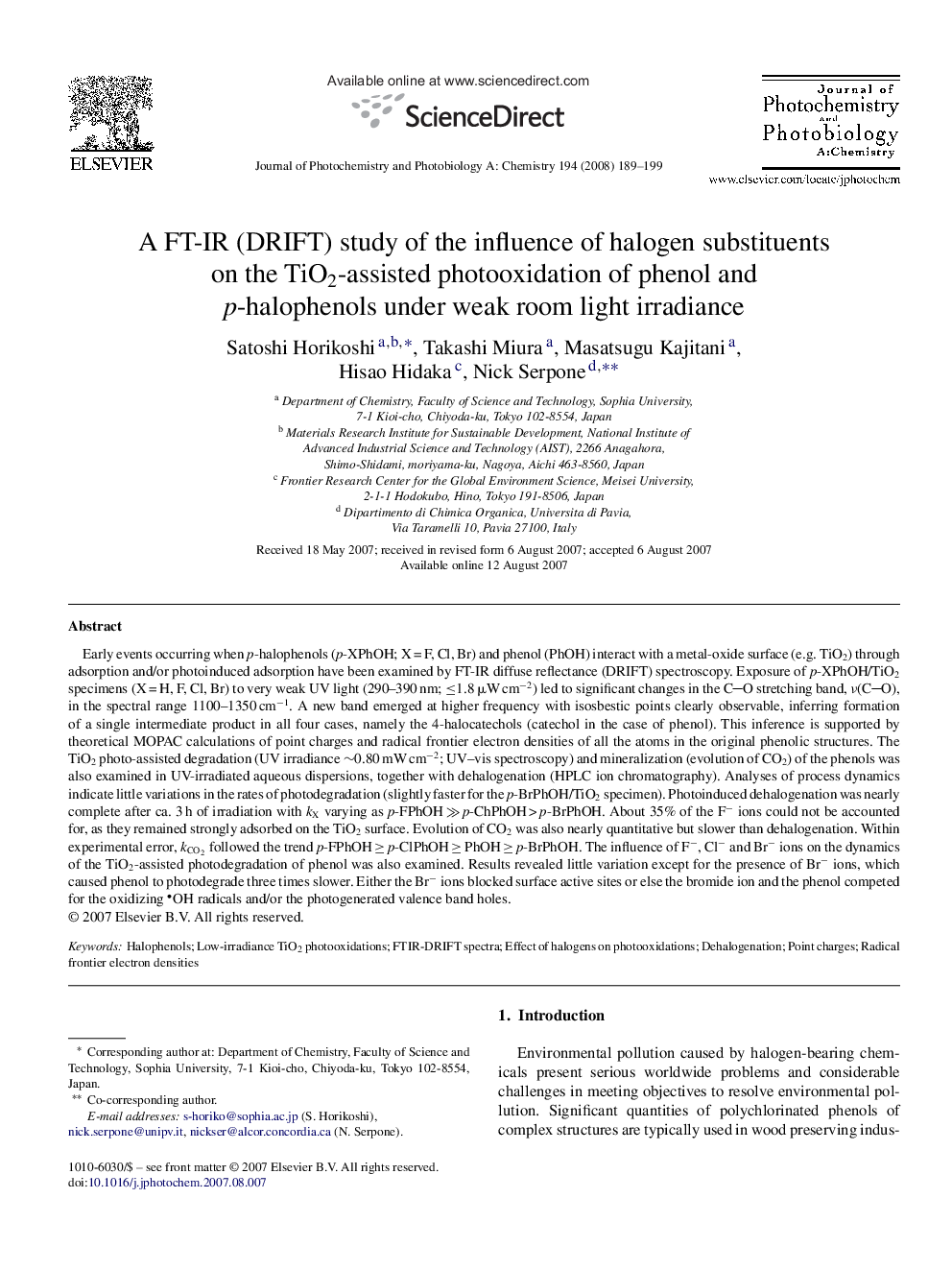| کد مقاله | کد نشریه | سال انتشار | مقاله انگلیسی | نسخه تمام متن |
|---|---|---|---|---|
| 29159 | 44127 | 2008 | 11 صفحه PDF | دانلود رایگان |

Early events occurring when p-halophenols (p-XPhOH; X = F, Cl, Br) and phenol (PhOH) interact with a metal-oxide surface (e.g. TiO2) through adsorption and/or photoinduced adsorption have been examined by FT-IR diffuse reflectance (DRIFT) spectroscopy. Exposure of p-XPhOH/TiO2 specimens (X = H, F, Cl, Br) to very weak UV light (290–390 nm; ≤1.8 μW cm−2) led to significant changes in the CO stretching band, ν(CO), in the spectral range 1100–1350 cm−1. A new band emerged at higher frequency with isosbestic points clearly observable, inferring formation of a single intermediate product in all four cases, namely the 4-halocatechols (catechol in the case of phenol). This inference is supported by theoretical MOPAC calculations of point charges and radical frontier electron densities of all the atoms in the original phenolic structures. The TiO2 photo-assisted degradation (UV irradiance ∼0.80 mW cm−2; UV–vis spectroscopy) and mineralization (evolution of CO2) of the phenols was also examined in UV-irradiated aqueous dispersions, together with dehalogenation (HPLC ion chromatography). Analyses of process dynamics indicate little variations in the rates of photodegradation (slightly faster for the p-BrPhOH/TiO2 specimen). Photoinduced dehalogenation was nearly complete after ca. 3 h of irradiation with kX varying as p-FPhOH ≫ p-ChPhOH > p-BrPhOH. About 35% of the F− ions could not be accounted for, as they remained strongly adsorbed on the TiO2 surface. Evolution of CO2 was also nearly quantitative but slower than dehalogenation. Within experimental error, kCO2kCO2 followed the trend p-FPhOH ≥ p-ClPhOH ≥ PhOH ≥ p-BrPhOH. The influence of F−, Cl− and Br− ions on the dynamics of the TiO2-assisted photodegradation of phenol was also examined. Results revealed little variation except for the presence of Br− ions, which caused phenol to photodegrade three times slower. Either the Br− ions blocked surface active sites or else the bromide ion and the phenol competed for the oxidizing OH radicals and/or the photogenerated valence band holes.
Journal: Journal of Photochemistry and Photobiology A: Chemistry - Volume 194, Issues 2–3, 20 February 2008, Pages 189–199